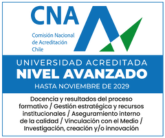Microchannels can be used to simulate xylem vessels and investigate phytopathogen colonization under controlled conditions. In this work, we explore surface functionalization strategies for polydimethylsiloxane and glass microchannels to study microenvironment colonization by Xylella fastidiosa subsp. pauca cells. We closely monitored cell initial adhesion, growth, and motility inside microfluidic channels as a function of chemical environments that mimic those found in xylem vessels. Carboxymethylcellulose (CMC), a synthetic cellulose, and an adhesin that is overexpressed during early stages of X. fastidiosa biofilm formation, XadA1 protein, were immobilized on the device’s internal surfaces. This latter protocol increased bacterial density as compared with CMC. We quantitatively evaluated the different X. fastidiosa attachment affinities to each type of microchannel surface using a mathematical model and experimental observations acquired under constant flow of culture medium. We thus estimate that bacterial cells present ∼4 and 82% better adhesion rates in CMC- and XadA1-functionalized channels, respectively. Furthermore, variable flow experiments show that bacterial adhesion forces against shear stresses approximately doubled in value for the XadA1-functionalized microchannel as compared with the polydimethylsiloxane and glass pristine channels. These results show the viability of functionalized microchannels to mimic xylem vessels and corroborate the important role of chemical environments, and particularly XadA1 adhesin, for early stages of X. fastidiosa biofilm formation, as well as adhesivity modulation along the pathogen life cycle.



